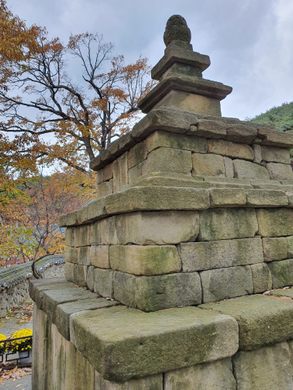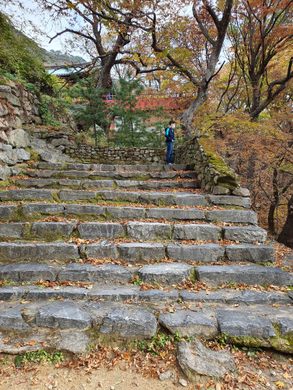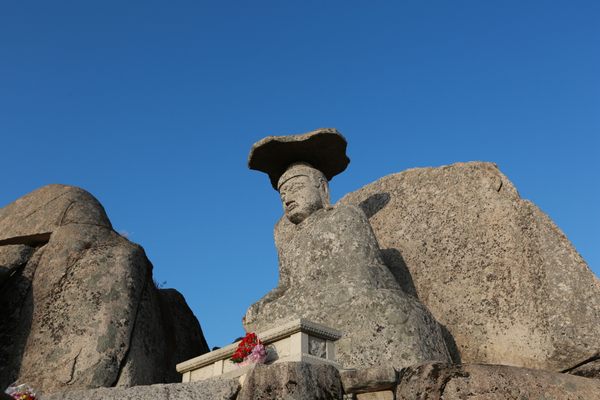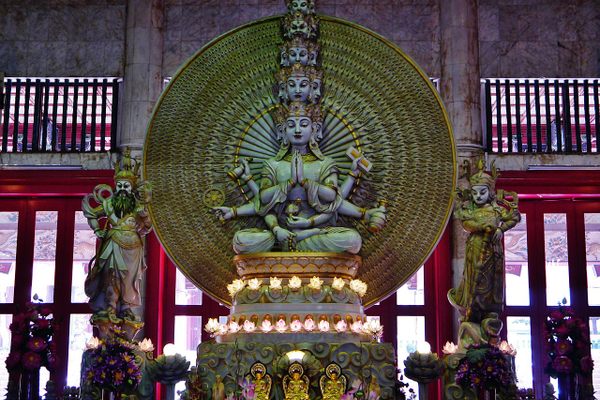AO Edited
Dorisa Temple
Known as the birthplace of Korean Buddhism, this temple features an ancient, five-story stone pagoda.
Up a long, steep, and winding mountain road, Dorisa Temple stands overlooking plunging valleys, the Nakdong River, and the distant Gumi cityscape. Known as the birthplace of Korean Buddhism, legend has it that the monk Ado-hwasang (Ado for short) stumbled upon this magical location, where peach and plum trees blossomed all year, around the year 418.
Ancient stone stairs lead to the temple’s entrance, where one of Korea’s most famed national treasures was found—a hexagonal sarira reliquary said to contain the Buddha Shaykamuni’s ashes.
Stroll around the grounds to find the shrine to Monk Ado, where you can light incense or leave an offering, and explore the Geuknak-jeon (Tangible Cultural Heritage No. 466), which was built in the mid-1600s and houses a gilded 129-centimeter (50 inch) Buddha statue made from juniper wood.
The stunning five-story pagoda, just opposite Geuknak-jeon, is one of the oldest and most unique in the country. Two doors at the top face the valley below, the pagoda symbolizes that the Buddha’s remains were enshrined inside.
Follow the path to Joaseondae next to the pagoda, where you’ll find the stone seat where Monk Ado meditated and practiced Zen, then head down to Jeokmeolbogung, the building that contains the reliquary with Buddha’s remains.
Though the exact date of Dorisa Temple’s construction is unknown, the five-story stone pagoda was likely built during the Goryeo period (918 - 1392) and is Korean Treasure No. 470.
Monks routinely meditate in Geuknak-jeon and often walk the grounds, and you’re welcome to take off your shoes and enter any of the open buildings. Dorisa offers a temple stay program, and it has a small cafe and shop.
Plan Your Trip
The Atlas Obscura Podcast is Back!



























Follow us on Twitter to get the latest on the world's hidden wonders.
Like us on Facebook to get the latest on the world's hidden wonders.
Follow us on Twitter Like us on Facebook